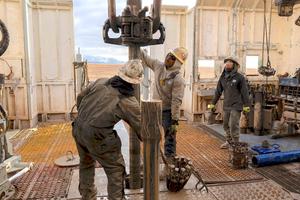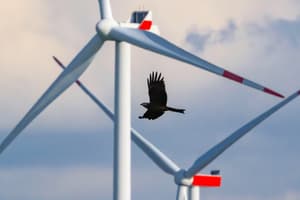The world is nearly on track to triple renewable power by the end of this decade. A major barrier to meeting that goal, or surpassing it, analysts say, is the speed of permitting wind and solar projects and of building new transmission lines.
At the U.N. climate conference last year, nearly 200 countries agreed to a goal of tripling renewable capacity by 2030. Analyses from Bloomberg New Energy Finance and the International Energy Agency find this goal is within reach. The cost of wind and, particularly, solar has fallen precipitously, boosting the renewable buildout. But to hasten the shift away from fossil fuels, governments must trim lengthy permitting processes, add energy storage, and erect transmission lines that can ferry renewable power from where it is produced to where it is needed.
“It often takes as long or longer to obtain permits and licenses for large-scale renewable energy projects as it does to build them,” the IEA said in its report. It called on countries to simplify permitting. In Germany, where the government recently streamlined the approval process for renewable energy, wind and solar installations have nearly doubled.
The IEA also called for adding 1,500 gigawatts of storage by the end of this decade, more than the total power capacity of the U.S., and for building or upgrading more than 15 million miles of power lines worldwide.
In industrialized countries, “nothing else will matter as much” as upgrading the power grid, Generation Investment Management, a green investment firm, said in a recent report. But doing so, it said, “involves slow, cumbersome bureaucratic procedures.” In the U.S., one transmission project, which will link wind farms in Wyoming to cities in the West, languished in permitting for 18 years before breaking ground last year.
In a new report on solar power, energy think tank Ember said that the constraint on future growth “is unlikely to come from solar panel prices.” The key, it said, “will be to ensure that countries have sufficient grid capacity to transport power to where it is needed, as well as develop battery storage capacity to complement solar outside of the sunniest hours.”
ALSO ON YALE E360
Why Taiwan and Its Tech Industry Are Facing an Energy Crisis



